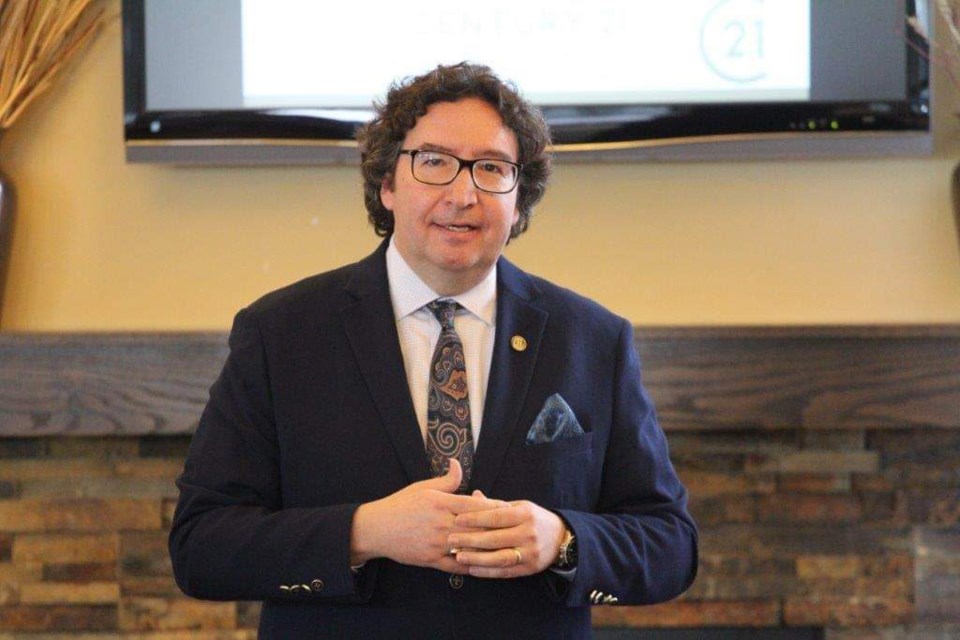
(File photo)
While there are options under the municipal act for replacing former town councillor Stuart McCormack, who sent a letter of resignation to the Town and the media last Wednesday, there is a history of past councils following the tradition of appointing the ninth-place candidate in the previous election.
The most recent example was the appointment of Gary Zalepa Jr., who is now the regional councillor representing Niagara-on-the-Lake.
He was elected as a municipal councillor in 2010, but served two years in the council before that, after being appointed to the position Oct. 6, 2008. He was the ninth-place finisher in the 2006 election, and stepped in to fill the position left vacant by the passing of Bob Howse, who died of cancer in August, 2008.
Zalepa says he wasn’t involved in any discussion leading up to his appointment, until the decision was made and he was called to ask if he was willing to serve.
There hasn’t been the need for an appointment to council since, he says, and hearing McCormack had resigned brought the memories of that time back to him.
McCormack’s resignation came as a surprise and a disappointment, says Zalepa, who called the exit of the councillor “graceful.”
The last time a councillor resigned brought back memories for Rob Copeland. A long-time former resident of Queenston, he and his wife Helena recently left the village for Vankleek, Ontario, a community near the Ontario/Quebec border.
They still keep in touch with friends from NOTL, and it wasn’t long after McCormack announced he was resigning that Copeland heard the news.
He was elected to town council three times: 1994, 1997, 2000, and 2003. In the 2000 election, Copeland was deputy mayor, with the most amount of votes of the candidates for councillor.
Although many remember him throwing his keys down on the council table and leaving a meeting in frustration during a discussion about a McDonald’s Restaurant franchise coming to town — a move Copeland remembers making the national CBC news —that wasn’t why he resigned, he says.
During that term of council, the Queenston Community Association, which originated back in the 1970s, took on the issue of Part IV heritage designation for the village.
Copeland spearheaded the issue with council, and after meetings with the villagers, thought he had everyone onside.
He thought he had even converted a local resident and developer, who had some concern about limits that might be imposed on development under heritage designation.
But the day before it was going before council, with Copeland confident of a “slam dunk” in favour of designation, a group of three people, including the developer, distributed a petition and convinced enough villagers to sign that when it was presented to council, the vote for designation was lost.
“I had given so much, and I felt like I was hitting my head against the wall. I had to step down,” said Copeland. “It was the only way to protest.
Tom Braybrook, the ninth-place candidate in the 2000 election, was appointed to replace Copeland in October, 2002.
He remembers an old guard on council that tried to stop his appointment, although there was a precedence to follow. “Although you might think it was a simple decision, there was a movement to bypass me by some members, and appoint another person, or even have an expensive by-election,” Braybrook recalls, from his retirement home in B.C.
Both he and Copeland went on to win seats in the 2003 election, replacing a couple of the old guard politicians of the previous term.
In 2006, Copeland did not run again, and Braybrook took a stab at the mayor’s race, losing to Gary Burroughs, who had been expected to run for regional councillor but at the last minute decided to go for one more term as mayor.
Braybrook has so far managed to stay out of politics in Victoria, B.C., and is now living “a happy, healthy retirement in beautiful B.C. So in the end it is all good.”
Jim Collard was also appointed to his first term on council. In December, 1985, shortly after a municipal election, Collard, the ninth-place candidate, was asked o fill the position left vacant on council when Harold Clement was appointed to regional council to replace Wilbert Dick, who had been named regional chair.
“I remember that time very well,” says Collard. “I was so excited to be appointed, to be a champion of the people.”
While there were other options available to council to fill the vacant position, “I don’t remember there being any discussion,” says Collard. He went on to spend almost 30 years in municipal politics, before deciding not to run in the 2018 election.
Clement, first elected in 1963, served 34 years representing Niagara-on-the-Lake, as a municipal and then regional councillor.
While Collard could remember realtor Kevan O’Connor also being appointed to council, he couldn’t recall the details.
A review of Town records, says town clerk Peter Todd, shows that in September, 1987, O’Connor, who passed away in 2018, was appointed to fill the position left vacant on council by the resignation of Alderman Mike Dietsch, who left to take the position of MPP for the local riding, representing the Liberal party. O’Connor had placed 10th in the municipal election held in 1985.